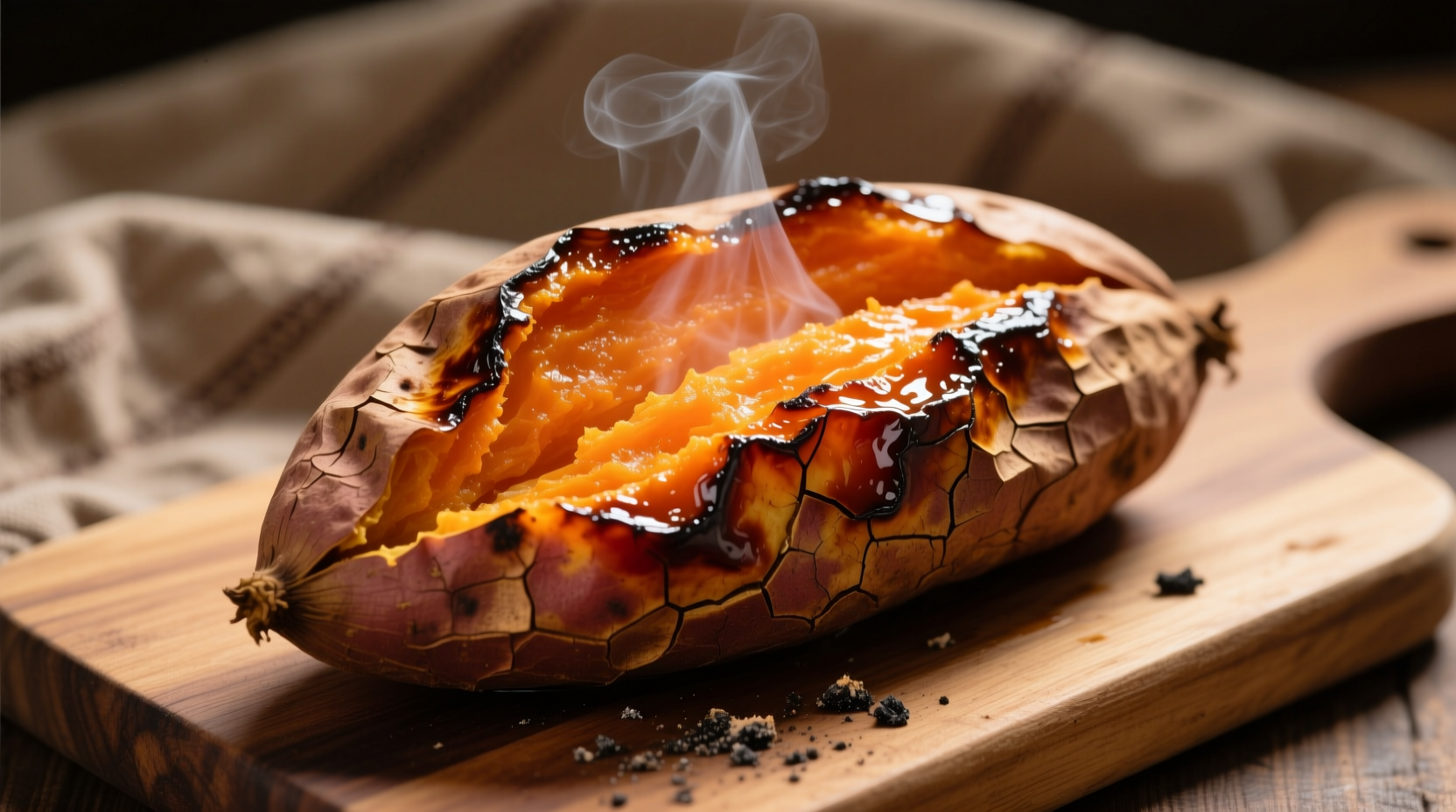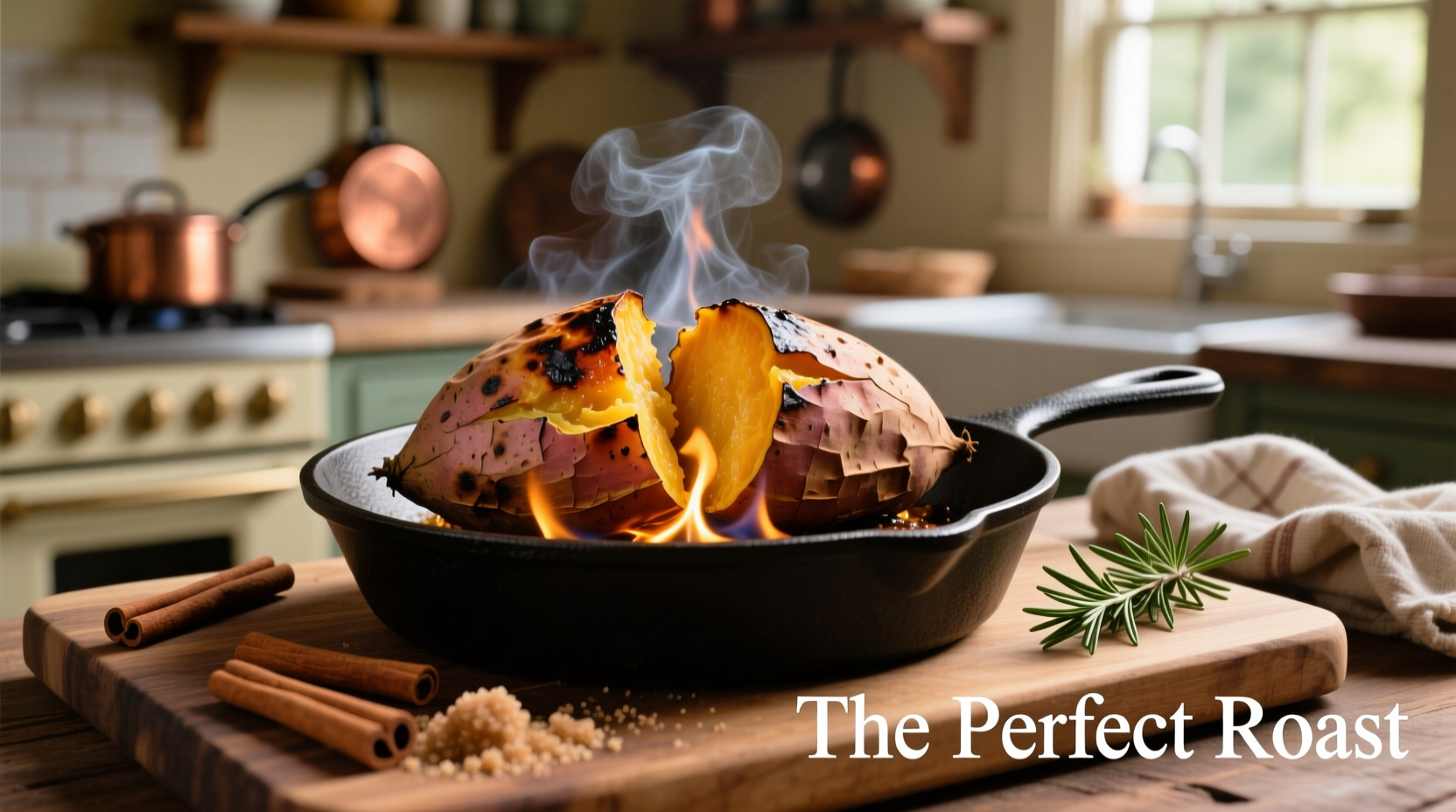
Why Roasting Beats Other Cooking Methods
When you're looking for the best way to cook a sweet potato for maximum flavor, roasting consistently outperforms boiling, steaming, and microwaving. Unlike water-based methods that leach nutrients and dilute natural sugars, dry heat cooking triggers the Maillard reaction and caramelization, transforming the sweet potato's starches into complex sugars.
According to research from the USDA Agricultural Research Service, roasting preserves up to 92% of beta-carotene compared to boiling's 60-70% retention rate. This isn't just about nutrition—it directly impacts flavor development and texture.
The Science Behind Perfect Sweet Potato Texture
Sweet potatoes contain two starches: amylose and amylopectin. When heated to 185°F (85°C), these starches begin gelatinizing, creating that signature creamy texture. But the magic happens between 300-350°F (149-177°C), where natural enzymes convert starches to maltose—a sugar 30% sweeter than sucrose.
| Cooking Method | Time Required | Sweetness Level | Nutrient Retention |
|---|---|---|---|
| Roasting (400°F) | 45-60 minutes | ★★★★★ | 92% |
| Boiling | 25-35 minutes | ★★★☆☆ | 65% |
| Steaming | 30-40 minutes | ★★★☆☆ | 78% |
| Microwaving | 8-12 minutes | ★★☆☆☆ | 85% |
Step-by-Step Roasting Method for Perfect Results
Follow these professional chef techniques for the best way to cook a sweet potato in oven that delivers restaurant-quality results at home:
- Preparation: Scrub sweet potatoes thoroughly (no need to peel) and pierce 4-5 times with a fork
- Temperature: Preheat oven to 400°F (205°C) – lower temps won't caramelize properly, higher burns skins
- Placement: Place directly on oven rack with baking sheet on lower rack to catch drips
- Timing: Cook 45-60 minutes (depending on size) until fork-tender and internal temperature reaches 205°F (96°C)
- Finishing: Let rest 5 minutes, then slice open and fluff with fork before serving
When to Choose Alternative Cooking Methods
While roasting delivers the best overall sweet potato cooking technique, certain situations call for different approaches:
For Meal Prep: The Steam-Roast Hybrid Method
When preparing multiple sweet potatoes for the week, steam for 15 minutes first, then finish with 20 minutes of roasting. This Colorado State University Extension technique cuts total cooking time by 30% while maintaining flavor development.
Emergency Time Crunch: Microwave Finish
For the quickest way to cook sweet potato without sacrificing quality, microwave for 5 minutes until partially cooked, then finish with 15 minutes of roasting. This preserves more nutrients than full microwave cooking while cutting time in half.
Pro Tips for Flavor Enhancement
Professional chefs use these techniques to elevate even the best way to cook a sweet potato:
- Salt the skin: Lightly rub with salt before cooking to draw out moisture and create crispier skin
- Temperature check: Use an instant-read thermometer—perfect texture occurs at 205°F (96°C)
- Resting time: Always let rest 5 minutes after cooking for more even texture
- Acid balance: A squeeze of lime or apple cider vinegar after cooking enhances perceived sweetness
Avoid These Common Sweet Potato Mistakes
Even with the best cooking method for sweet potatoes, these errors can ruin your results:
- Wrapping in foil (creates steamed texture rather than roasted)
- Skipping the fork pricks (causes bursting)
- Cooking at too low temperature (prevents caramelization)
- Peeling before cooking (removes nutrient-rich skin and causes waterlogging)
Storage and Reheating for Perfect Leftovers
Store cooked sweet potatoes in airtight containers for up to 5 days. For best reheating results, wrap in damp paper towel and microwave for 60-90 seconds, or place cut-side down on 350°F (177°C) oven for 10-15 minutes. This maintains the best texture when reheating cooked sweet potatoes without drying them out.











 浙公网安备
33010002000092号
浙公网安备
33010002000092号 浙B2-20120091-4
浙B2-20120091-4